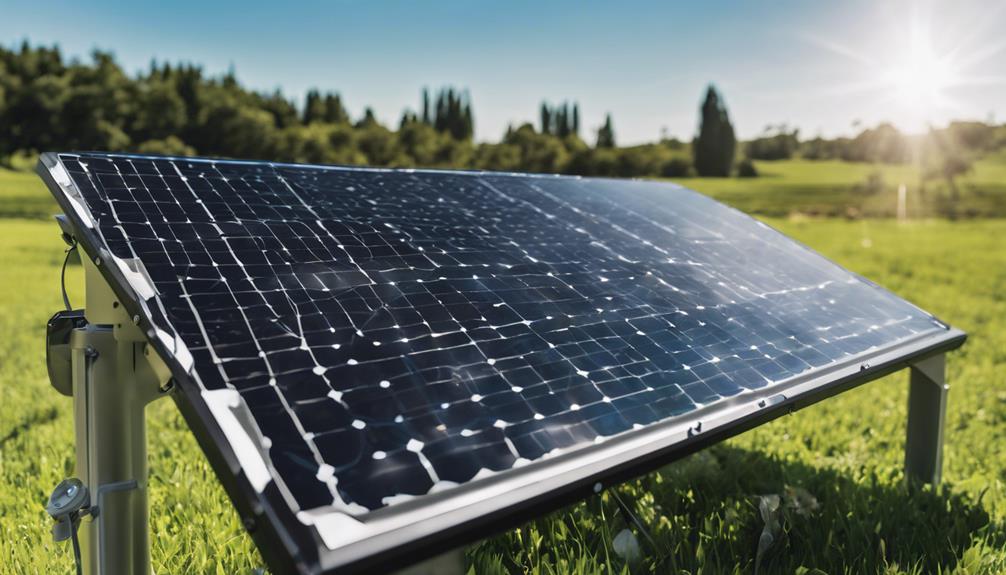
In today’s world, where energy consumption is skyrocketing and the effects of climate change are increasingly evident, the demand for renewable energy solutions is at an all-time high. Among the various options available, Thunderbolt solar panels stand out as a reliable and efficient choice for individuals and businesses looking to transition to sustainable energy sources. In this article, we will explore the benefits, technology, installation process, and much more related to Thunderbolt solar panels.
What Are Thunderbolt Solar Panels?
Thunderbolt solar panels are high-efficiency photovoltaic (PV) systems designed to convert sunlight into usable electricity. These panels utilize advanced photovoltaic technology to maximize energy output while minimizing space usage. With a sleek design and robust construction, Thunderbolt solar panels can be integrated into various applications, from residential rooftops to large-scale commercial installations. Their versatility and efficiency make them an attractive option for anyone looking to invest in solar energy.
The Benefits of Thunderbolt Solar Panels
Investing in Thunderbolt solar panels comes with numerous benefits. Firstly, they can significantly reduce your electricity bills by harnessing the sun’s energy, which is free and abundant. Secondly, solar energy systems are environmentally friendly, contributing to the reduction of greenhouse gas emissions and reliance on fossil fuels. Additionally, many governments offer tax incentives and rebates for solar installations, making them a financially sound investment. Lastly, Thunderbolt solar panels are known for their durability and low maintenance requirements, ensuring long-term performance and reliability.
How Thunderbolt Solar Panels Work
The operation of Thunderbolt solar panels is based on the photovoltaic effect. When sunlight hits the solar cells within the panels, it excites electrons, creating an electric current. This direct current (DC) is then converted to alternating current (AC) by an inverter, making it usable for household appliances and the electrical grid. Thunderbolt solar panels are designed with high-quality materials to enhance energy absorption and minimize energy loss. Their innovative technology allows for better performance even in low-light conditions, making them a reliable choice year-round.
Choosing the Right Size and Type of Thunderbolt Solar Panels
Before installing Thunderbolt solar panels, it’s essential to determine the right size and type for your needs. Factors such as your energy consumption, available roof space, and budget will influence your decision. Thunderbolt offers various models with different wattage outputs, so you can choose a system tailored to your energy requirements. It’s also crucial to consider whether you want a grid-tied, off-grid, or hybrid system. Consulting with a solar energy expert can help you understand the best options available and ensure you make an informed decision.
The Installation Process of Thunderbolt Solar Panels
Installing Thunderbolt solar panels involves several steps. Initially, a professional assessment of your property will be conducted to determine the optimal configuration for solar panel placement. After that, the installation team will prepare the site by ensuring proper structural integrity and compliance with local regulations. The installation process typically takes one to three days, depending on the system size and complexity. Once installed, the panels will be connected to your electrical system, and any necessary permits will be finalized. Post-installation, a quality check ensures that everything functions correctly and efficiently.
Maintenance and Care for Thunderbolt Solar Panels
One of the key advantages of Thunderbolt solar panels is their low maintenance requirements. However, regular care is essential to ensure optimal performance. It’s recommended to clean the panels periodically, especially in areas with heavy dust or debris. A simple rinse with water is usually sufficient, but for persistent grime, a gentle soap solution can be applied. Additionally, it’s advisable to have your system inspected by professionals at least once a year to check for any issues and ensure everything is functioning at peak efficiency.
Cost Considerations and Financing Options for Thunderbolt Solar Panels
The cost of Thunderbolt solar panels can vary widely based on the system size, installation complexity, and specific local incentives available. However, investing in solar energy is often seen as a long-term financial strategy. Many homeowners find that the initial investment pays off through reduced energy bills over time. There are also various financing options available, such as solar loans, leases, and power purchase agreements (PPAs), making it easier for homeowners and businesses to transition to solar energy without a significant upfront cost.
The Future of Thunderbolt Solar Panels and Renewable Energy
As the world increasingly shifts towards renewable energy solutions, the future of Thunderbolt solar panels looks promising. Advances in technology are leading to greater efficiencies and lower costs, making solar energy more accessible than ever. Furthermore, with growing awareness of environmental issues, more individuals and businesses are recognizing the importance of sustainable energy sources. Thunderbolt solar panels are poised to play a significant role in this transition, offering reliable, efficient, and eco-friendly energy solutions for years to come.
In conclusion, Thunderbolt solar panels represent a significant advancement in solar technology, providing an effective and sustainable solution for energy needs. Their numerous benefits, coupled with the ease of installation and low maintenance requirements, make them an excellent investment for the future. Whether you are a homeowner looking to reduce energy costs or a business aiming to adopt sustainable practices, exploring the advantages of Thunderbolt solar panels is a step toward a greener, more sustainable future.





